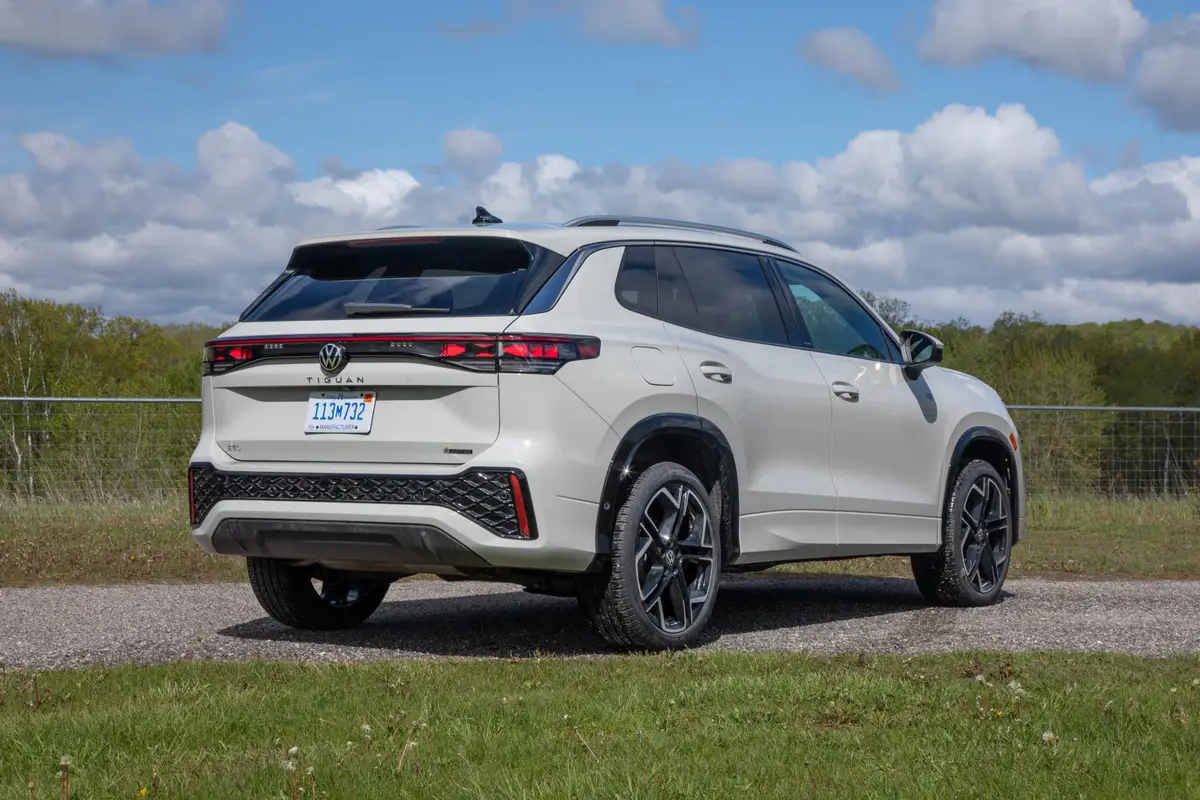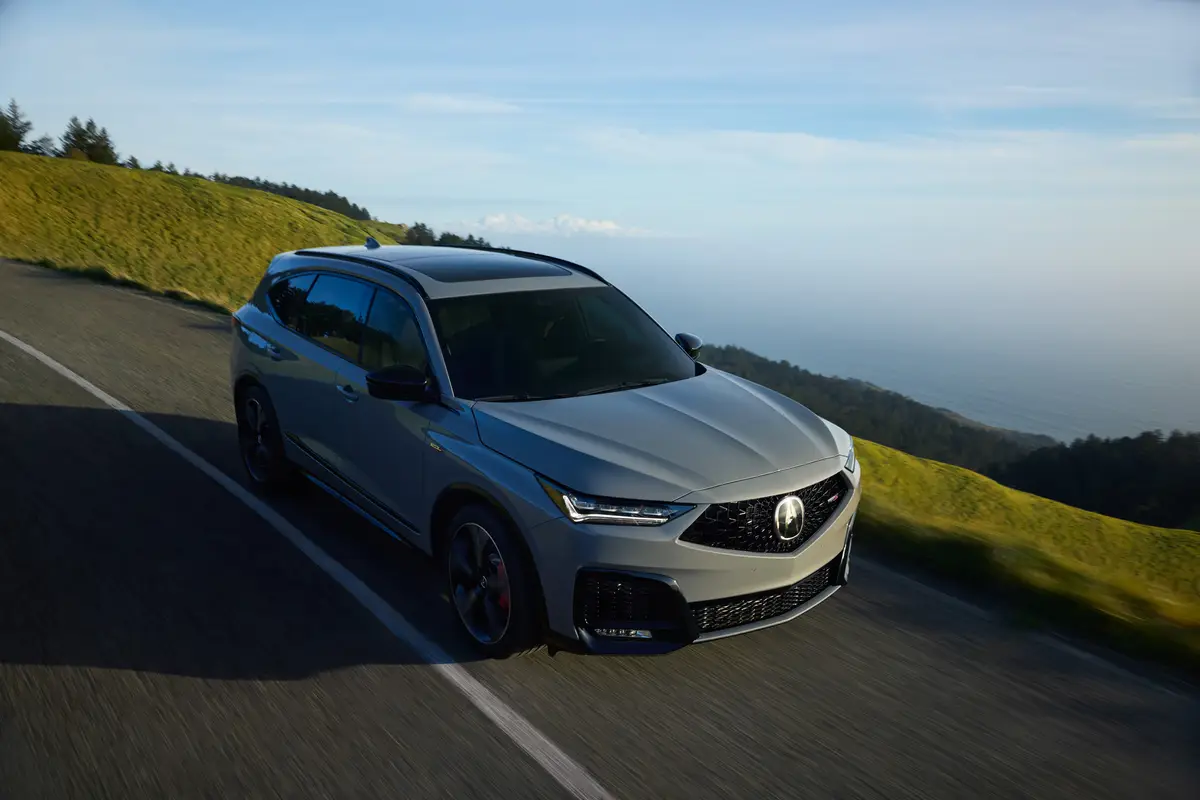chicagotribune.com's view
The New Yorker sedan-Part Deux.
Or make that, the New Yorker sedan-plus $5,000.
The extended-length version of the Chrysler LH sedan, the luxury New Yorker now in showrooms under the 1994 model designation, has been joined by a companion in sports trim called the LHS.
That means the regular 1993 model Chrysler LH sedans, the Chrysler Concorde, Dodge Intrepid and Eagle Vision, have two larger companions, the 1994 New Yorker at $25,000 and the LHS at $30,000.
The ’94 LHS we test-drove is basically the same vehicle as the New Yorker (Cartalk, May 9), except that just about every conceivable option you can load on the New Yorker is standard on the LHS.
That means you get the same 3.5-liter, 214-horsepower, 24-valve, V-6 teamed with 4-speed automatic, a quiet yet responsive combo rated at 18 miles per gallon city/26 m.p.g. highway.
You also get driver- and passenger-side air bags as standard to protect front-seat occupants. To reduce the likelihood of having to use the bags, four-wheel anti-lock brakes are standard. And to reduce the odds of having to use the ABS, traction control is standard. Traction control keeps the wheels from spinning on slippery surfaces, so you don’t have to tiptoe away from the light or around the corner.
You also get very similar rounded aero-styling as with the New Yorker, with the notable exception that LHS comes with a body-colored grille that adds a touch of distinction and uniqueness to the sports sedan version of the luxury New Yorker. The grille complements the flush, body-colored door handles and wraparound body-colored bumpers.
LHS and New Yorker are built on the same 113-inch wheelbase as the regular LH sedans, but boast 7 inches in added length, to 207 inches. As with the New Yorker, you get abundant interior room and a trunk that probably can carry as many sets of golf clubs as your local pro shop.
Thankfully, what we didn’t get in LHS that we got in the New Yorker was a stiff seat. The LHS sedan came with richly padded leather buckets to sink into and enjoy. The New Yorker comes with a block of granite covered with a thin layer of cloth.
Perhaps what sets the LHS apart from past Chrysler products is the quiet. No squeaks or rattles or metal or rubber or plastic rubbing against one another, the tiny flaws that for too long and too often were excused with the remark, “Well, after all, it is a Chrysler.”
Being No. 3 seemed to set a tone at Chrysler that it didn’t have to be as good as the competition because, after all, it was No. 3. For too long it justified annoyances by saying it didn’t have the same financial resources as the big boys. Finally Chrysler has realized that consumers don’t care about Chrysler’s finances as much as they care about their own.
While the LHS rides in stark contrast to previous Chrysler models, there are a few areas in which it could be improved. Rid e and handling are very good, but the suspension system allows for unnecessary lean in sharp turns. In other words, it doesn’t sit as flat on the winding pavement as a Cadillac Seville STS.
A late entry on the LHS goodies list is a power sunroof. Starting this week, a sunroof is standard. Some of the early models, including our test vehicle, were produced before the hardware was available, so they don’t have the sunroof. To make up for it, $792 has been deducted from the sticker. We’d rather have the sunroof.
In conjunction with the sunroof, Chrysler is adding a new color for the LHS called platinum silver metallic. We saw the new color on a tour of Chrysler’s LH plant in Bramalea, Ontario. It’s a very rich, deep, almost wet-looking silver and should prove to be popular.
The LHS will be the only model offering a sunroof until this fall, when the New Yorker and all LH sedans will add it as an option.
Base price is $29,046, or about $5,000 m re than that on the New Yorker.
Standard equipment includes four-wheel independent suspension, 16-inch touring tires, power heated mirrors, intermittent wipers, leather-wrapped steering wheel and shifter knob, power seats, air conditioning, rear seat heat ducts, tilt steering, cruise control, Chrysler’s Infinity AM-FM stereo with cassette and power antenna, message center to warn of low fluids and deck lid/door ajar, overhead console with compass/temperature readings, front and rear reading lamps, power windows and door locks, self-healing paint that will eliminate tiny ring or key marks, keyless entry in which you press the fob to lock or unlock doors and release deck lid and dual cupholders that slide from the center console.
A lot of comfort and convenience to go along with roominess and above-average performance and a raft of safety features. But flirting with the $30,000 mark seems a bit presumptuous for Chrysler, especially when such rivals as Buick offer full-size LeSabre sedans for $18,999. LeSabre doesn’t offer dual air bags or traction control, but it does offer an $11,000 spread.
Still, though pricey, LHS will help erase memories of the time Chrysler’s lineup was a selection of 4-cylinder K-cars under a variety of aliases.
Chief engineer Francois Castaing and chief designer Tom Gale are still around to take the bows for the LH cars and their extended-length offshoots such as the LHS. Gone is Lee Iacocca, who gave the project his blessing and allowed it to become reality. He deserves accolades.
At the same time, however, Iacocca has put his successors on the spot. The LH sets the new benchmark at Chrysler. Future models, such as the subcompact PL-body Neon coming in January and the midsize JA-body replacements for the Dodge Spirit and Plymouth Acclaim a few months later, have to live up to the LH standard.
Latest news



